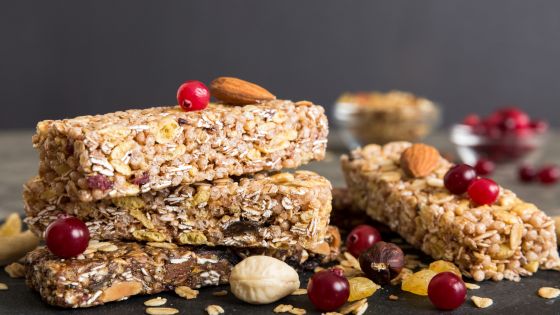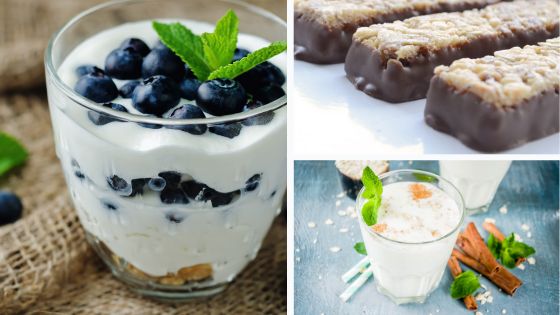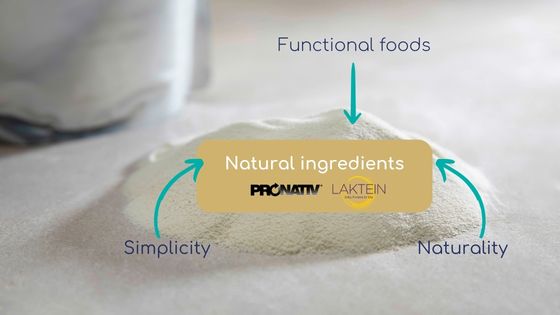
What is the balance between functional foods and ultra-processed foods?
The holistic approach to nutrition is a major current trend. Today, the link between food and health is better understood than ever by consumers, who pay increasing attention to the quality of their diet. A perfect example of this trend is functional foods. However, a significant obstacle to sustaining the holistic trend is the ultra-processing of certain functional foods. In this context, what approach should be taken? How do you find the right balance between functional and ultra-processed foods?
Functional foods: A few reminders
Let’s start by defining the concept of functional foods. These are foods that offer health benefits because they contain nutrients with the potential to improve physical or mental health or reduce the risk of certain diseases or health problems.[1]
This definition can be supplemented by the notion of diversity, in terms of the type of products available, the range of outlets where functional foods can be found, and with regard to the health benefits provided.
Functional foods can be divided into 3 categories:
-
-
- Raw, unprocessed foods: whole grains, spirulina, blueberry, goji berries
- Products that increase the concentration of nutrients naturally present in their composition e.g., fiber-fortified cereal bars, calcium-fortified dairy products
- Products to which a key nutrient is added e.g., candy supplemented with vitamins, energy drinks, etc
-

Finally, it is possible to find functional foods in all departments of major food outlets, for instance the fresh produce department, the bakery or in food products such as cereals, compotes, drinks etc.
By their nature and nutritional value, dairy products are also very much affected by this trend. In particular, they have major benefits for bone health or digestive health, especially if they are enriched with nutrients such as calcium or protein, for example. As a result, health claims are an effective way to promote them.
Functional foods alongside ultra-processing
What is ultra-processing?[2]
A food is said to be ultra-processed if:
-
-
- It has undergone intense chemical, biological or physical transformations (e.g., splitting a food into multiple components – cracking – pre-treatment by frying, heating to very high temperatures, etc.).
- Additives reserved for industrial use, not used in home cooking, have been added. For example, foods containing components such as maltodextrins, hydrogenated oils or modified starch are considered ultra-processed.
-

These transformations and additives are used in particular to improve the flavor and texture of food, enable improved preservation or make its appearance more palatable. However, some of them are considered controversial and health authorities recommend limiting their consumption.
Functional foods that are sometimes ultra-processed
As previously stated, some foods become functional by the addition of ingredients (either naturally occurring in the food or as a supplement). But in doing so, they also become transformed or ultra-processed. This is the case for milk drinks to which calcium and vitamins have been added, fruit juices enriched with vitamins or oral nutritional supplements enriched with protein.
Thus, the definitions of functional and ultra-processed foods may merge. Fortunately, it’s not impossible to find the right balance!
What is the balance between functionality and ultra-transformation ?
More naturalness in the choice of ingredients….
Developing functional foods is not always easy. Finding the balance between meeting a specific nutritional need and the level of processing of the food can be a real challenge.
For this reason, choosing natural ingredients when formulating is a first step towards developing products that contribute to the popularization of a less processed diet. Such ingredients are particularly sought after by consumers, who tend to prioritize purchases of less- processed products.[3]
To support you in the development of products that combine nutritional benefits and naturalness, Lactalis Ingredients has developed the ingredients Pronativ® and Laktein. The first is a range of native whey proteins and native micellar casein, which are natural and are derived directly from milk, while the second is a protein directly from whey.

While choosing more natural ingredients is a first step, it is possible to go that little bit further by making sure to avoid controversial ingredients. It may therefore be possible to do without artificial additives or colors. Finally, when it comes to the ingredients of a processed food, the simplest thing to do is to limit them as much as possible.
Finally, acting on manufacturing processes is another way to simplify recipes. Pronativ® proteins are obtained by a simple non-denaturing physical separation process, meaning they undergo minimal processing.
Lactalis Ingredients’ ingredients, due to their origin and their non-denaturing manufacturing process, can thus be perfectly integrated into functional foods intended for sports nutrition or seniors. Sources of protein and low in fat, they allow you to naturally meet specific nutritional needs. All the while preserving the organoleptic quality of the finished product thanks to their neutral taste.
… for simpler finished products
The different ways of balancing functional and ultra-processed can be motivated by one objective: that of obtaining the Clean label. This designation refers to a process of simplification of the list of ingredients, the reworking of recipes and transparency, but as yet no precise definition has been established to frame its use. Based on the previous examples, Laktein and Pronativ® are ideal ingredients for inclusion in functional food formulas seeking to be Clean Label.
Functional foods can therefore also be ultra-processed. The challenge is not to simply combine these two characteristics, but to aim to promote simplicity, naturalness or, in other words, to develop a clean label approach. Whether rethinking manufacturing processes, simplifying recipes, or opting for new ingredients, there are many possible avenues and Lactalis Ingredients has already committed to a significant number of them!
Contact us for more information!
Sources:
[1] EUFIC, Aliments fonctionnels,
[2] Manger Bouger, Les aliments ultra-transformés, pourquoi moins en manger ?, 12/2021
[3] Xerfi Global, L’industrie mondiale des produits alimentaires transformés, 2023














